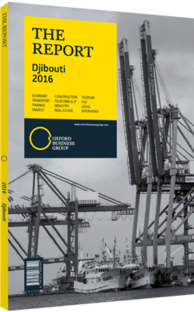Sourcing local cement in Djibouti a challenge
As Djibouti executes its $14bn infrastructure development plan, securing the necessary building materials has become a crucial necessity for construction companies and suppliers.
This is most visible in terms of cement, an industry which has become the beneficiary of new investment across the continent, as major producers like Lafarge and Dangote look to raise capacity in high-growth economies.
Production Capacity
In spite of high energy costs – traditionally a disincentive for large energy consumers like cement factories – Djibouti currently manufactures out of two main production units, one public and one private, with a capacity of nearly 500,000 tonnes annually. This far outstrips local consumption, which climbed to 115,000 tonnes in 2013, up from 100,000 tonnes in 2011.
The state owns the Cimenterie Ali Sabieh cement plant, which opened its doors in 2013. The Ali Sabieh production unit had a total installed capacity of 240,000 tonnes as of 2013. Much of the cement produced at the plant is expected to be used domestically. That same year, UAE-based Nael Cement inaugurated its $13m cement factory, with an annual production capacity of 220,000.
Investor Interest
Despite the already high capacity and limited domestic market size, as well as the high energy costs, investors have shown interest in Djibouti as a potential location to base cement manufacturing. Delegates from China Resources Cement, a cement manufacturer, visited the country in March 2015. According to the president of Djibouti Ports and Free Zones Authority, Aboubaker Omar Hadi, quoted in the local media, the Chinese group is considering building a new cement factory in Ali-Sabieh, with a production capacity of 2m to 5m tonnes of cement annually.
The new unit is expected to serve exported cement in the region, both to neighbouring countries in East Africa, as well as other markets, using the country’s strategic location for sea commerce and as a transport centre .
Quality Issues
Despite the availability of locally produced cement in Djibouti, the quality can vary – particularly in the case of larger and more demanding infrastructure projects. According to OBG surveys, part of this is related to the quality of the sand used in local cement production projects. Furthermore, the country’s weather and proximity to the ocean can have an especially abrasive impact on construction materials in general.
The value of cement imports rose from DJF75,360m ($442,016) in 2010 to DJF137,058m ($767,524) in 2014, according to figures from the country’s Directorate for Statistics and Demographic Studies (Direction de la Statistique et des Etudes Démographiques, DISED). The majority of these cement imports, at a value of DJF119.144m ($667,038) came from Asia.
Although imports can easily make up for cement requirements, handling delays at the port sometimes means that projects need to wait for the necessary building materials to arrive. “In the construction sector the issue is not the availability of materials, but the lengthy Customs procedures where capacity is not always enough to ensure a swift handling of goods from the port to the construction site; shortages of clinkers and steel have occurred due to this,” Jobi Sam, business development manager at Nael & Bin Harmal, told OBG.
This is expected to improve as Djibouti’s port infrastructure becomes more efficient, due to the port expansion plans. This will be a much needed change, with the ongoing infrastructure development programme set to require added amounts of building materials. As Djibouti modernises its transportation infrastructure, the country can expect a substantial return on its investment.
You have reached the limit of premium articles you can view for free.
Choose from the options below to purchase print or digital editions of our Reports. You can also purchase a website subscription giving you unlimited access to all of our Reports online for 12 months.
If you have already purchased this Report or have a website subscription, please login to continue.

